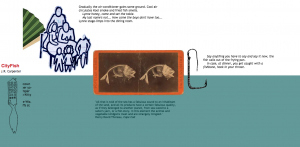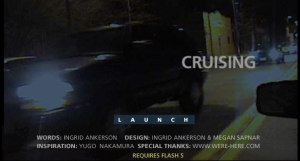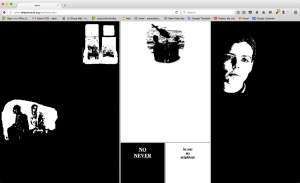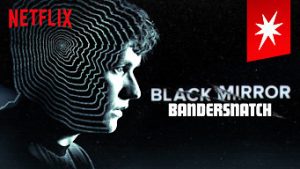**For some reason I posted this at 10pm on April 30th but it says I posted it on May 1st?**
For my final project in the class, I decided to do a collaborative piece with Elaina using Twine. Throughout this project, we thought it would be interesting if we pass a Twine file back and forth and each add something to the story. The only thing we both knew were the direction we wanted the story to go, the treasures the player could get, and where the story would ultimately end up. Since we did it this way, there are things about the project that I still haven’t discovered, and things Elaina hasn’t yet discovered either. This was an interesting way of working because it’s really strange to now know exactly what’s in your project. At the same time, it was also really exciting because one of us would play through it and message the other and be like “this was such a great idea how did you do it?”. It created a sense of excitement when you open the file for the first time after the other person worked on it.
We decided to base our Twine game off of the pieces Colossal Cave Adventure and ZORK. I did my ELD entry on CCA and Elaina did hers on ZORK, and since they were so closely related we decided it would be a good idea to implement them into our final project and work together. Not only did we heavily base our story and format off of them, but there are also multiple easter eggs such as some of the treasures you can find in our version, you can also find in CCA or ZORK. However there are also a few key differences with our version as well, such as the navigation system. In the originals you would type the commands in, but in our version since it’s on twine the navigation is through hyperlinks. Due to limitations with the Twine format we used as well (Harlowe 2.0) we weren’t able to find a way to implement an inventory system or point system the way we wanted to. It was fun to work in Twine not only because of how much we can do on it, but also because unlike these original games, we were able to see a map of our final project and users are also able to look at the cave map to see if there’s anything they missed or just for some guidance. Originally we had planned that to beat the game you had to collect all the treasures, but near the end we decided to change it to each treasure giving a unique ending if you decide to give it to granny. We decided on this because we thought it would create more of a multilinear story. It didn’t seem fair to make the ending the same no matter what choices the player made, because then what was the point of them making all of those decisions?
The biggest struggle for me with this project was definitely the cave. I mapped out most of the cave and it got really confusing making sure everything connected correctly and was going where it was supposed to. I think the final version ended up having almost 40 different rooms just in the cave. This was also my first time completing a Twine of this size, so it was also really interesting to plan out all the different paths the character could take, what would determine each kind of ending they could get, and what big decisions should we have the player make that will affect their entire gameplay. My favorite part was being able to create all of the sassy and pithy things that the narrator of the story says, and being able to play through the final completed version of the game was also really cool. Colossal Cave Adventure is arguably one of the most important pieces of electronic literature, so it was really cool to be able to create a newer version of that with our own twist, with today’s standards of technology.
https://dtc-wsuv.org/esundwall18/red/

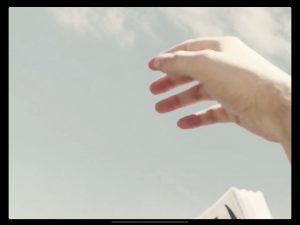

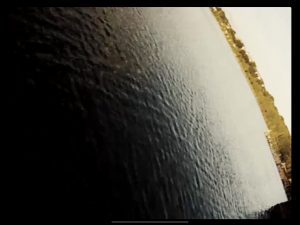
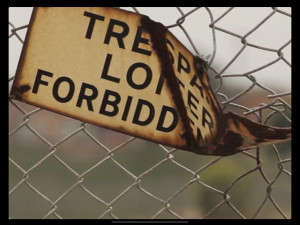

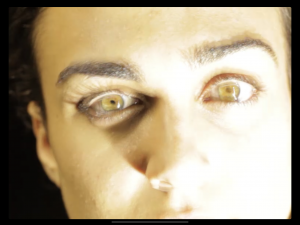

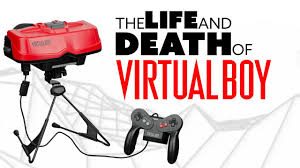




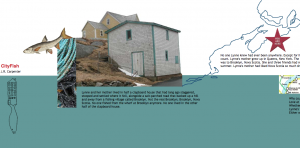
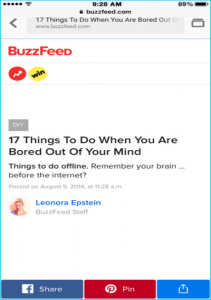 Eventually he meets up with Elizabeth, and escapes the police. In part 3 they then begin to rob banks together, and donating some of the money to charities after an article suggests they might be a modern day “Robin Hood” duo. Elizabeth’s sister then tells the police of their identities and gives away their information, and Elizabeth and Ted go into hiding and have a baby girl, who they name Alexandria. Most of part 4 is told through Elizabeth writing posts to her baby girl, which we as the audience get to read. The 5th part is then mostly told by Elizabeth’s sister, who told the police about their identities and is now writing blog posts about them. It is revealed that the couple started taking the baby with them to rob banks, and that they had stolen enough money to live off of for the rest of their lives, so it’s unlikely they will ever be seen again. The sound plays a huge part in this story, such as the background noises of cars driving by, and even at one point, Elizabeth singing to her daughter.
Eventually he meets up with Elizabeth, and escapes the police. In part 3 they then begin to rob banks together, and donating some of the money to charities after an article suggests they might be a modern day “Robin Hood” duo. Elizabeth’s sister then tells the police of their identities and gives away their information, and Elizabeth and Ted go into hiding and have a baby girl, who they name Alexandria. Most of part 4 is told through Elizabeth writing posts to her baby girl, which we as the audience get to read. The 5th part is then mostly told by Elizabeth’s sister, who told the police about their identities and is now writing blog posts about them. It is revealed that the couple started taking the baby with them to rob banks, and that they had stolen enough money to live off of for the rest of their lives, so it’s unlikely they will ever be seen again. The sound plays a huge part in this story, such as the background noises of cars driving by, and even at one point, Elizabeth singing to her daughter. 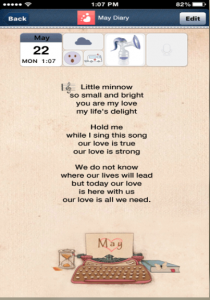 The most interesting part of this piece of work to me is that their relationship is based completely off of bank robbing. It’s the reason they get together, and as shown in parts 4 & 5 it is eventually what rekindles their relationship. When they aren’t bank robbing, Ted starts to distance himself from Elizabeth and their relationship. Only by bank robbing again and bringing their young daughter with them, are they able to save their relationship. This work was really immersive to me and I love how well the story was told through the use of the smartphone. Not only were we able to read the character’s story but we also got to see more mundane parts of their lives, such as the apps they play. I think my favorite part was the fact that the time and battery % on the phone was always changing. It was a really nice attention to detail.
The most interesting part of this piece of work to me is that their relationship is based completely off of bank robbing. It’s the reason they get together, and as shown in parts 4 & 5 it is eventually what rekindles their relationship. When they aren’t bank robbing, Ted starts to distance himself from Elizabeth and their relationship. Only by bank robbing again and bringing their young daughter with them, are they able to save their relationship. This work was really immersive to me and I love how well the story was told through the use of the smartphone. Not only were we able to read the character’s story but we also got to see more mundane parts of their lives, such as the apps they play. I think my favorite part was the fact that the time and battery % on the phone was always changing. It was a really nice attention to detail.